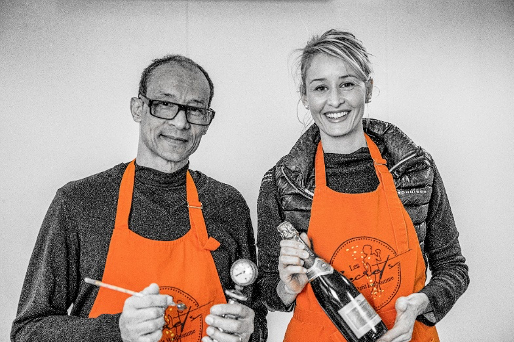Our Know-How
All viticulture, winemaking and ageing work is carried out on the domaine Veuve
Maurice Lepitre. The numerous cares brought to our vines and our wines reflect all
the best this incredible terroir has to offer!
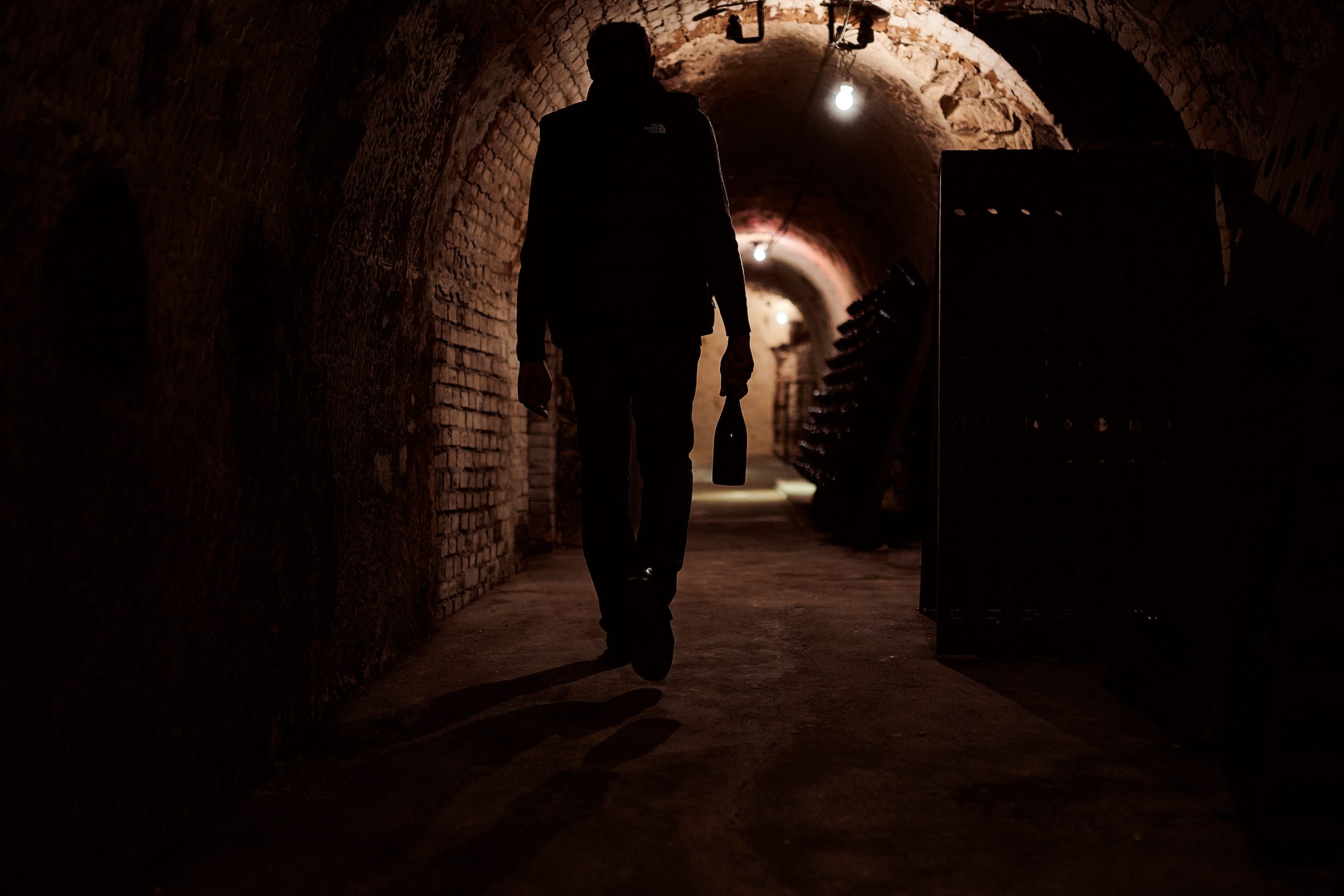
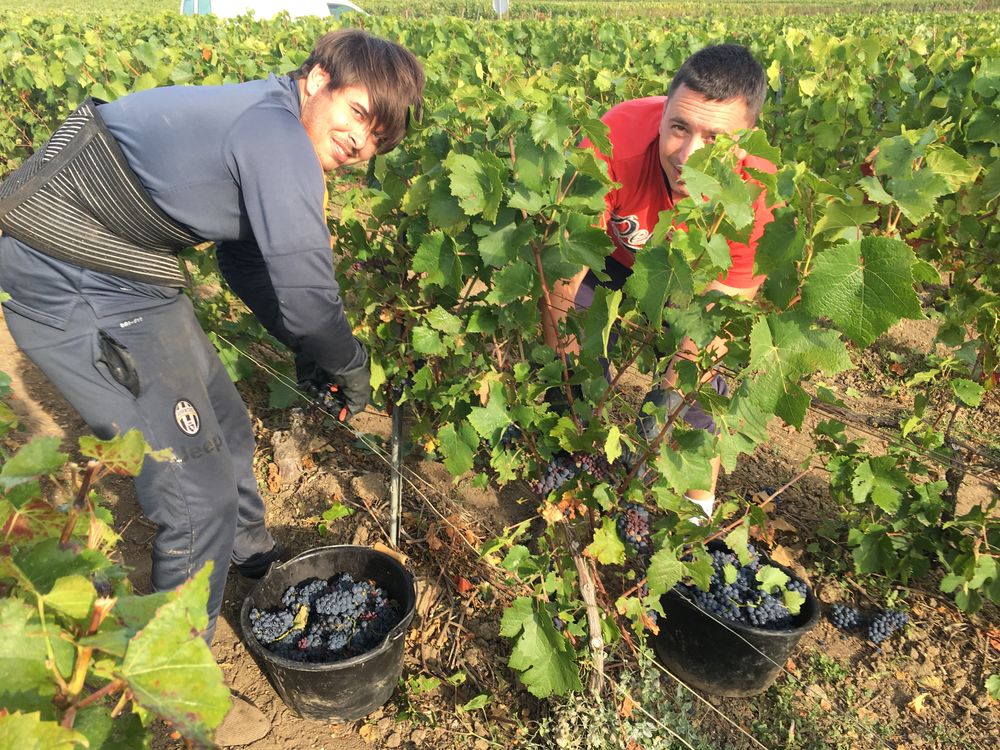
Harvest
In Champagne, the analysis of the maturity of the grapes by
“Cru” makes it possible to determine the precise date of the
beginning of the grape harvest. The basic yield, the quantity
of grapes to be picked per hectare each year, is set by decree.
Hand-picking of whole bunches of grapes is compulsory and
we sort the grapes by plot to eliminate spoiled grapes.
Pressing
The freshly picked grapes are transported to our pressing
centre under conditions that limit their oxidation and
maceration, where they are weighed and pressed within a
maximum of 18 hours.
From 4000 Kg of grapes (constituting a “marc”), we obtain 2
qualities of grape juice (“must”): the first fraction corresponds
to 20.5 hectolitres of “cuvée” and the second corresponds to 5
hectolitres of “taille” each with their own organoleptic
characteristics.
Since 1990, we have been using our own horizontal pneumatic
membrane press, approved in terms of quality by the CIVC
(Champagne Comitee). It guarantees us the best possible
pressing quality whatever the climatic conditions of the
harvest according to the strict regulations of the AOC
Champagne.
As part of our “high environmental value” approach, we
responsibly manage by-products and waste by sending them
to the distillery. Wine effluents (water used to clean the press,
grape boxes and vats) are recovered for treatment so as not to
harm the environment.
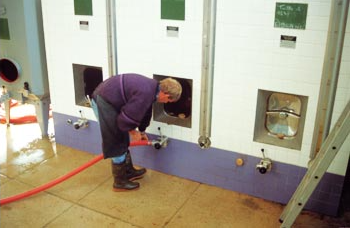

Winemaking
Always sparingly, we sulphite throughout the
winemaking process to preserve the physico-chemical
and sensory characteristics of our wines by avoiding oxidation
and to facilitate the settling of the must.
The must resulting from the pressing process settles for
a few hours through the settling process allowing
its first clarification by eliminating its impurities.
After racking, the must will undergo alcoholic
fermentation, allowing the transformation of sugars into
alcohol under the action of yeasts. The wine thus obtained will
be softened and gain in stability through malolactic
fermentation, which will give it a brioche note. A second stage
of clarification will followin order to improve the clarity of the
wine as much as possible.
Blending
It is by blending wines with different
aromatic and organoleptic qualities
that we proceed with the assemblage,
the art of creating a wine that is
superior to the sum of the former.
What underlies this approach has
always been for us the search for a
particular harmony between the notes,
so that no one dominates and one
feels a sense of balance in the mouth.
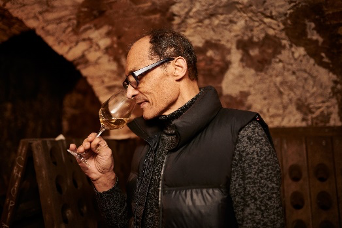
Bottling & “prise de mousse”
Once harmony has been found, the
wine is bottled with its liqueur de
tirage and then taken down to the
cellars at 12°C where the fermentation
in the
bottle known as “prise de mousse”
will take
place.
This is the capture of
the effervescence!
Ageeing on lees
The lees, consisting essentially of yeast, which gradually disappear once the sugars have been consumed, will form the deposit.
They will remain in contact with the wine for many years, creating interactions with it which are at the origin of the development
of the complexity of its aromas. In order for our wines to reach their full maturity in contact with the lees, we let them age
between 4 and 9 years.
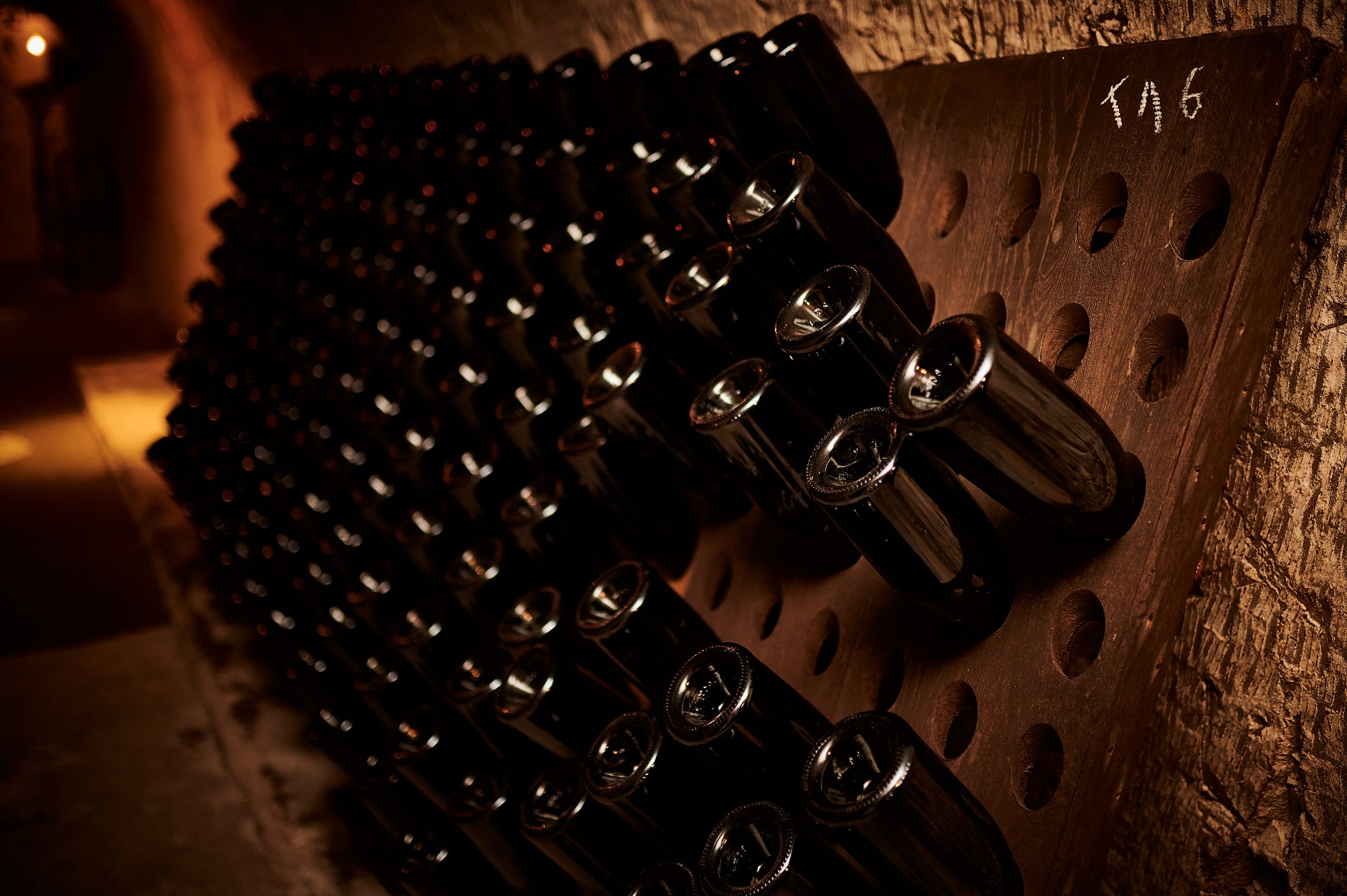
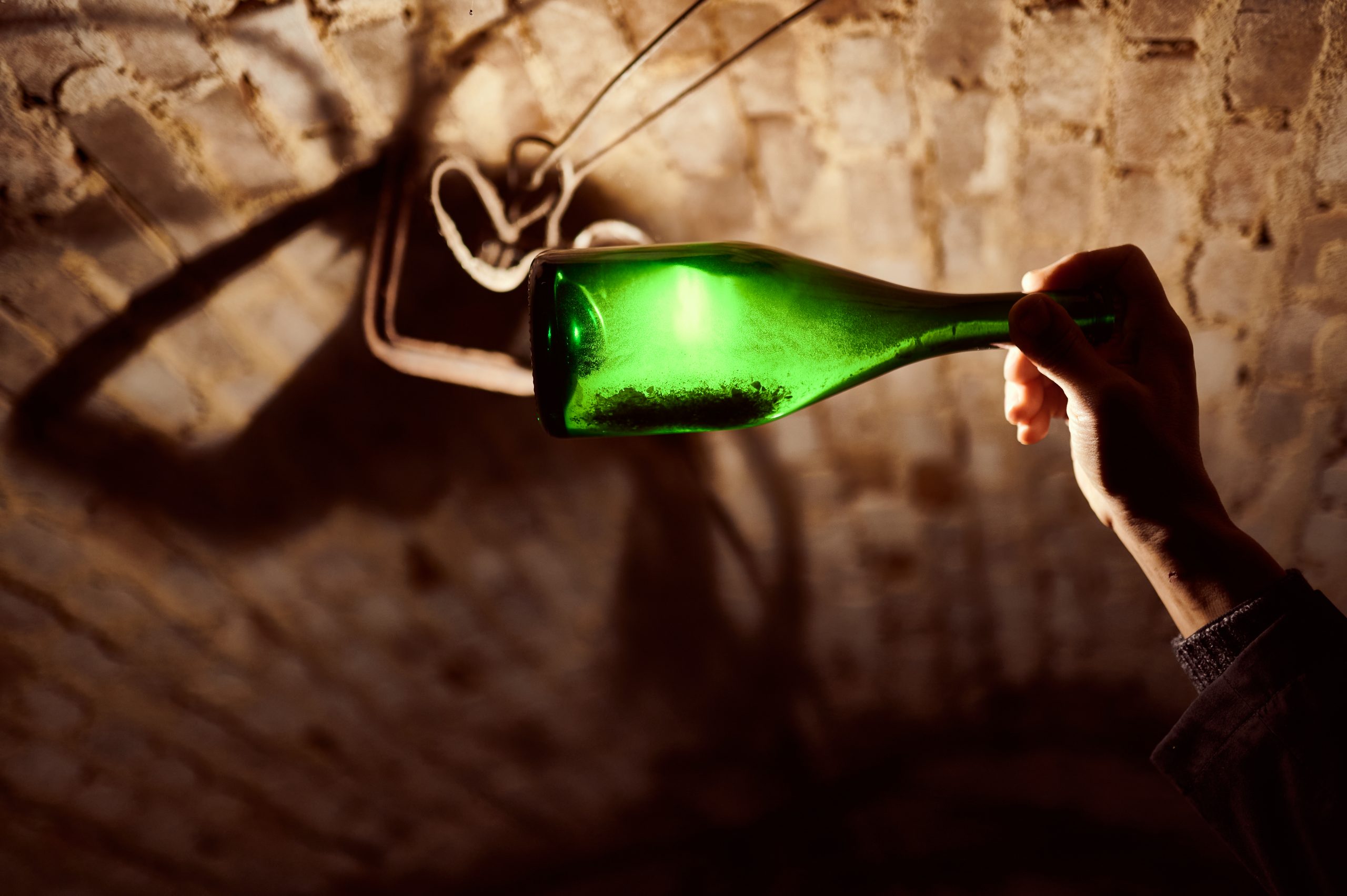
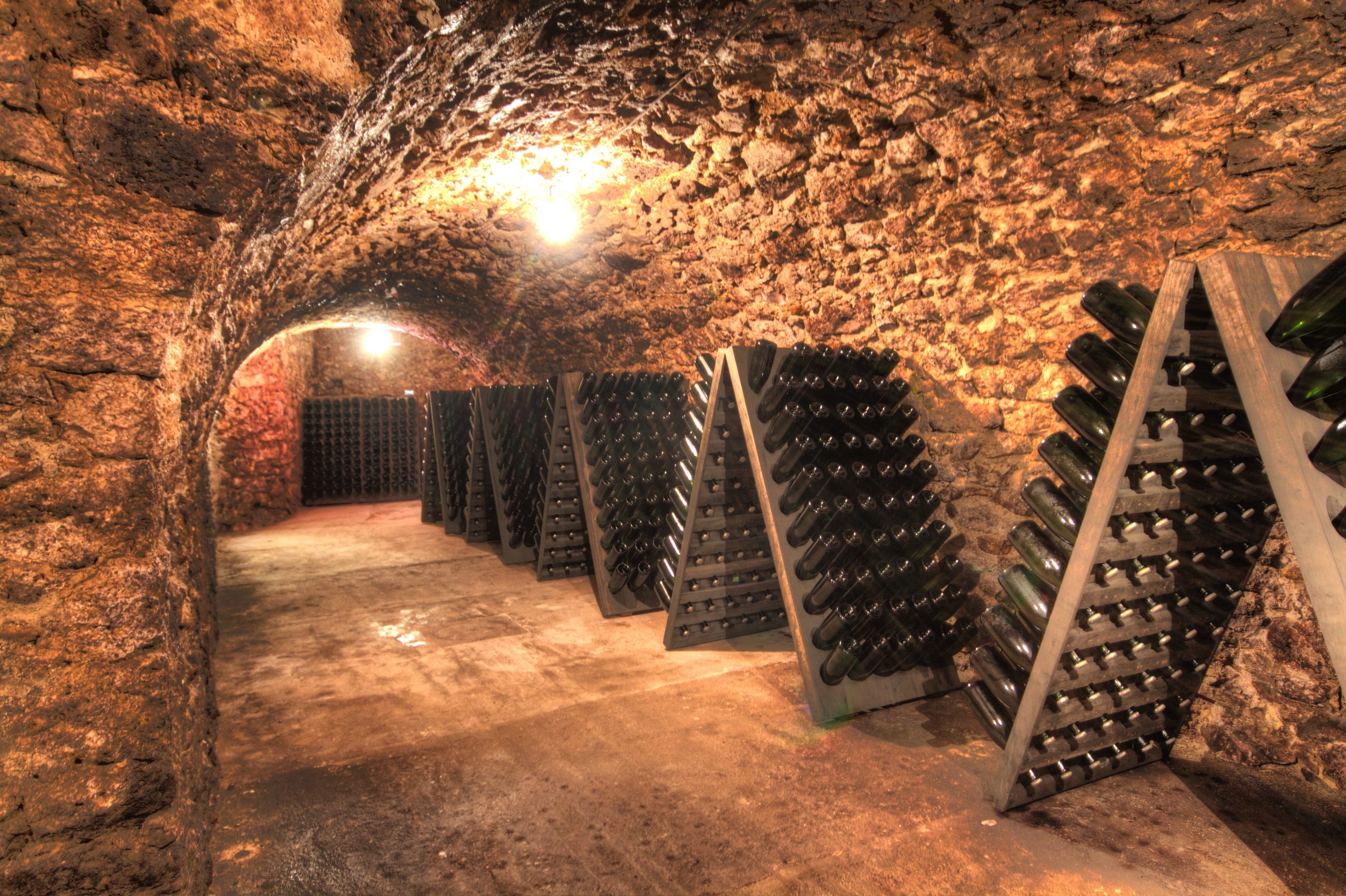
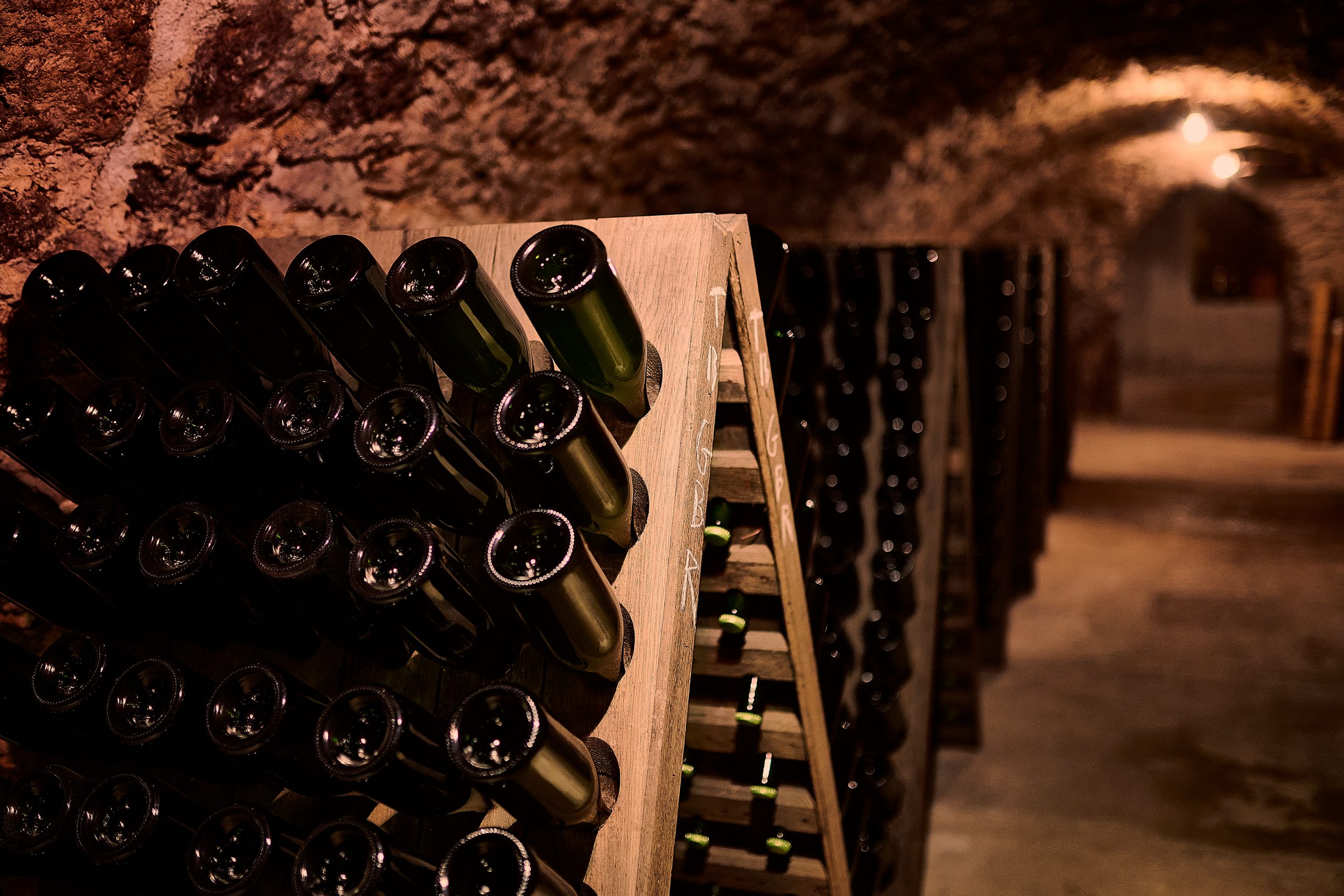
Riddling
After this long period of rest, the wine
must be given back itsclarity by
removing the deposit that formed
during the foaming process by
riddling. The bottles are placed
on wooden racks, first horizontally and
then gradually raised a quarter of
a turn to the left and then to the right,
allowing the deposit to collect in the
neck of the bottle.
Manual disgorging
Disgorging consists in eliminating the deposit that the
riddling has concentrated in the neck of the bottle by an
ancestral know-how passed down from generation to
generation.
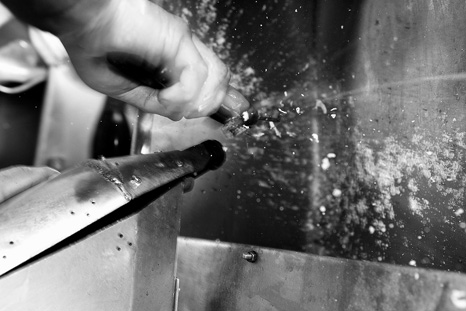
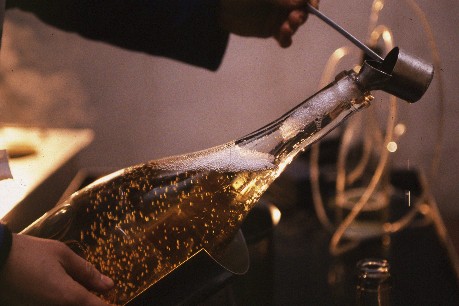
Dosage
The dosage is the last touch brought to the wine before the
final corking of the bottle. It corresponds to the addition of a
small quantity of liqueur.
Corking & Labelling
Immediately after dosage, the wine is corked to start a new
stage of its ageing. The bottles are then vigorously shaken
(wrist stirring) to ensure the homogeneity of the wine and the
liqueur, and their controlled limpidity (mirage). Then they
return to the cellar for another 6 months before being
marketed.
The last step is to carefully dress the bottles with their labels
and place them in their carton to protect them during the
long journey to your table!
Labelling
The last step is to carefully dress the bottles with their labels and place them in their carton
